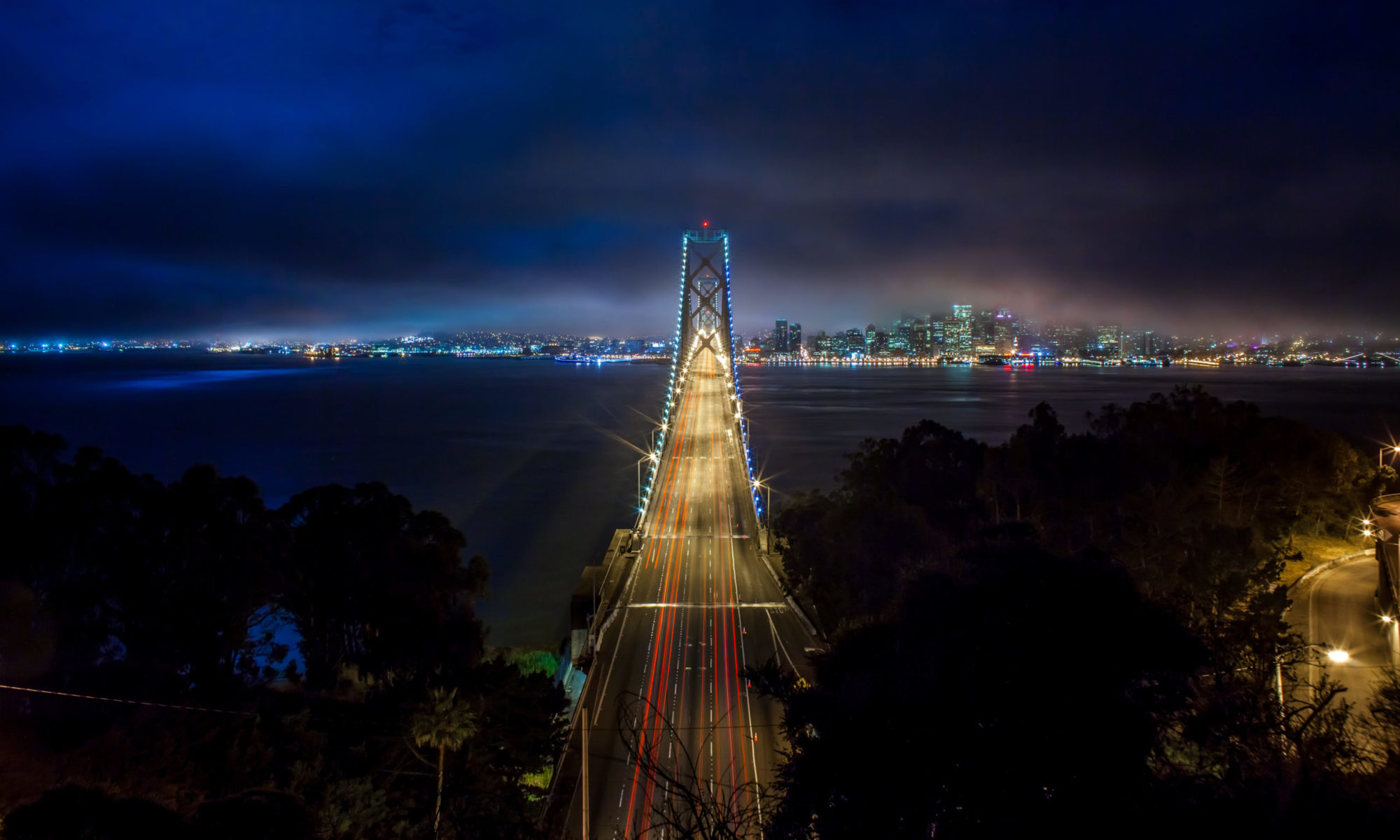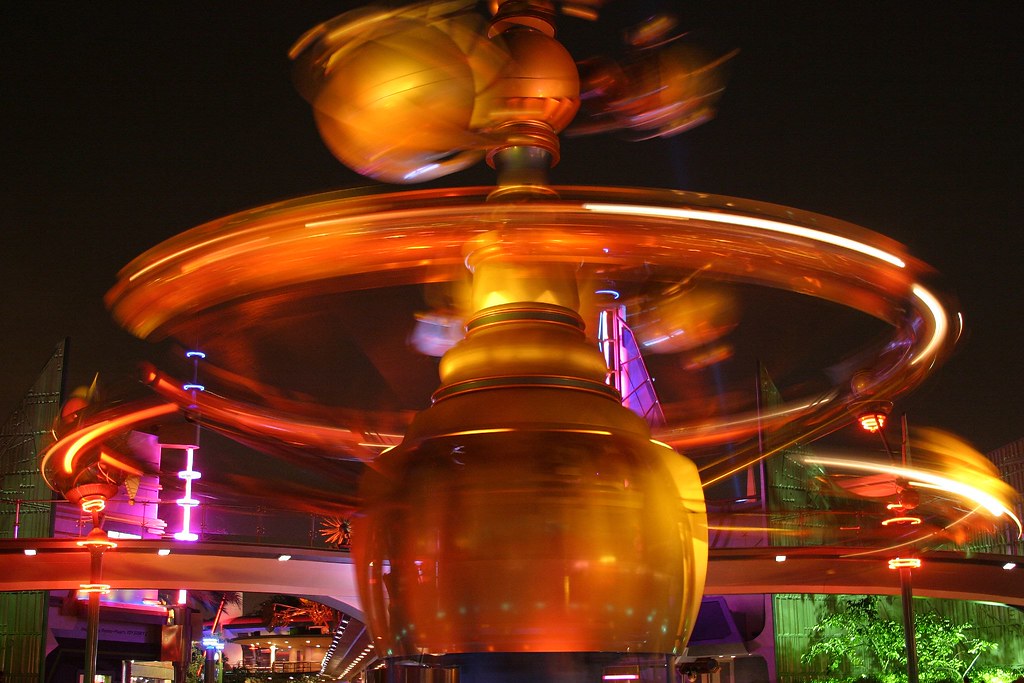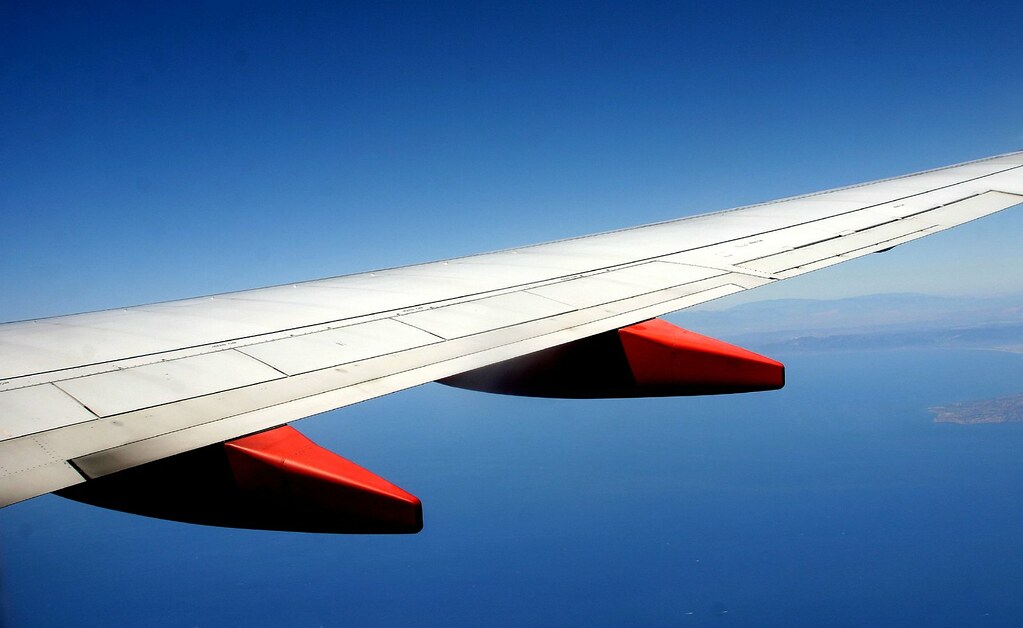I have to say that all of my own interactions with the Disney company have been enormously positive. I’ve shot both Disneyland and Downtown Disney in Anaheim and never had any trouble myself. When I shot Disneyland a few years back, I set up my tripod and shot several long exposure shots of the rides and was never hassled once. One time a Disney employee came up to me to ask me about my photography, but he was super pleasant and only was curious personally as to how I was making my photos. All in all I have a high regard from my own experiences of shooting on Disney property and their Magical Kingdom.
Disney does in fact allow personal photography on their various properties and goes so far as to even allow folding tripods that can fit inside a backpack (what I used when I shot at both Disneyland and Downtown Disney in Anaheim).
The Walt Disney Family Museum in San Francisco doesn’t allow photography, which kind of sucks, but the entertainment properties personally have always been pleasant for me. Of course *everyone* typically takes photos at Disneyland and Disneyworld and there are millions of photos online.
So I was very disappointed to learn today from photographer William Beem that he had a terrible experience recently while shooting Downtown Disney at Disney World in Florida. Based on his report, I’d say that Beem was treated very unfairly in light of Disney’s open photo policy and I hope that Disney issues him an apology and offers him a free pass or something to their parks.
In a post entitled, “Disney Thinks Photographers are Terrorists,” Beem chronicles in detail his frustration with Disney security officials after being confronted by them repeatedly and having them threaten to call the Sheriff’s Department on him for not providing them identification.
From Beem:
“At this point, I let Don know that I’m not comfortable providing him with more detailed information about me. He’s never told me where that information will be recorded. He’s all but directly accused me of being a terrorist and, quite frankly, I don’t see how handing him my driver’s license is going to thwart the terrorist attack he’s generated in his mind. I told Don, twice during our conversation, that I’ll be happy to leave the property if he feels I’m some sort of threat. Don tells me that if I don’t provide him with more identification that he’s going to call the Orange County Sheriff’s Office.
It’s frustrating to deal with this kind of mentality. Photography is not a crime, even on private property. At best, all a security guard can do is ask you to leave the property. They have no right to tell you that you can’t take photographs, confiscate your camera or other property, or even lay a hand on you. Fortunately, Don didn’t try anything physical at all. However, his demeanor definitely changed once I declined to give him my license. His approach changed from the friendly, but concerned security manager into one of threats and intimidation. While he repeatedly told me that he was going to call for a deputy if I didn’t provide my ID, I couldn’t help but wonder exactly what crime he was going to report to the deputies.
My plan for the evening was to shoot my photos and have dinner at House of Blues, but Don had definitely turned me away from wanting to give any business to Disney that night. I had also planned to renew my Annual Pass to take more HDR shots in the parks, but I can only imagine more intimidation and humiliation from Disney Security as a result. After roughly twenty minutes of dealing with Don, I told him that I was just going to leave. He was welcome to walk with me if he was concerned.
Don followed me, as did another uniformed guard, Eugene. During the walk out to my car, Don was on the phone calling in more guards and, I presume, the Sheriff’s office. By the time I arrived at my car, at least two more guards swiftly arrived on bicycles, a couple more had walked up, and there was a Disney Security car.
I took my time walking out. I took my time putting my gear away in the back of my car so he had plenty of time to let the deputy arrive, but I never saw one. While I packed up my gear, I asked Eugene if this happened often. He didn’t respond and seemed somewhat uncomfortable. I mentioned that he probably wasn’t allowed to say anything and he told me that he just preferred not to speak. That’s understandable, since his boss was right there. Eugene moved from Maryland to Orlando and started working at Disney eleven years ago. We talked a little about the weather and he mentioned that he liked the cold, but Disney was here. I can apprecate that Eugene wanted to work there. Maybe it’s still “magical” for him.
While I was packing up, I overheard Eugene on the phone. Although I don’t know who was on the other end of the call, I presume he was speaking to someone at the Sheriff’s office. Don said that he asked for my name and I was unresponsive. Well, that was a blatant lie and I told him it was untrue. I reminded him that I’d given him my full name, where I lived and even where I worked. Don seemed annoyed. It was bad enough that he lied about that (I understand that lying to the police is a crime), but then a few minutes later he told the same lie again. Clearly, this guy was working the phone to make me look like as bad as he possibly could. A few lies here or there were probably OK if it helps catch a terrorist; perhaps that’s how he rationalized it.
Once I closed the car I told them I was ready to leave, unless they planned to detain me against my will. Don said they wouldn’t do that and I was free to go. He then instructed the several security guards around me to take plenty of pictures and get everything. I found this somewhat ironic. I’m sure that I was captured on security video while on-site. Don’s guards likely took photos of me, my vehicle, my license plate and property. Then I drove off slowly and a Disney Security car followed me until I left the property.”
I hope that the Walt Disney Company looks into this poor behavior on the part of their security officers. Because hearing stories like this certainly make me seriously reconsider whether or not I want to support Disney properties in the future if I’m going to be treated like a criminal with my camera.




